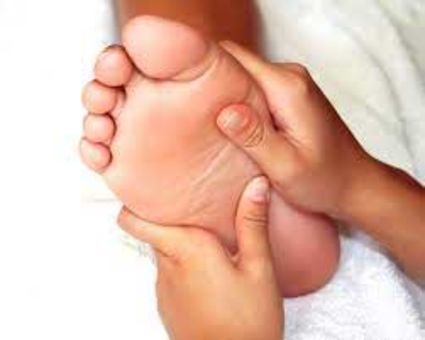Plantar fasci...what?
Pressure Points

Living in a mountainous area such as Tehachapi lends itself to being able to enjoy outdoor activities. One of the many activities that people enjoy here is hiking. As most of you know, the Pacific Crest Trail runs just east of Tehachapi through the windmills and north of Hwy 58, through the eastern Sierras. On occasion, when hikers come into town to take a break from their long trek on the trail, I will get a call to work on someone's painful heel. This brings us to the subject of Plantar Fasciitis (correctly pronounced "plantar fash-eee-eye-tiss"), the most common condition of heel pain.
Hikers aren't the only ones who suffer from this painful condition. Consider, for example, airline workers, athletes, nurses, cashiers, cooks, store clerks, soldiers, waitresses and anyone who is required to stand or walk for long periods of time. Another common cause of plantar fasciitis is arthritis. Certain types of arthritis can cause inflammation to develop in tendons, resulting in plantar fasciitis. Diabetes is also a factor that can contribute to heel pain and damage, particularly among the elderly.
Among the most common factors that contribute to plantar fasciitis is wearing incorrect shoes. In many cases, shoes either do not fit properly, or provide inadequate support or cushioning. While walking or exercising in improper shoes, weight distribution becomes impaired, and significant stress can be added to the plantar fascia ligament.
The pain of plantar fasciitis is usually located close to where the fascia attaches to the calcaneus, also known as the heel bone. Due to repetitive and excessive stress, this condition occurs when the long, fibrous, plantar fascia ligament, along the bottom of the foot develops a tear or a bone spur at the heel. The result...PAIN!
The plantar fascia ligament is made of fibrous bands of tissue and runs between the heel bone and your toes and stretches with every step. The most common complaint from plantar fasciitis is a burning, stabbing, or aching pain in the heel of the foot. Most sufferers will be able to feel it in the morning because the fascia ligament tightens up during the night while we sleep, causing pain to diminish. However, when we climb out of bed and place pressure on the ligament, it becomes taut and pain is particularly acute. Pain usually decreases as the tissue warms up, but may easily return again after long periods of standing or weight bearing and physical activity.
In most cases, plantar fasciitis does not require surgery or invasive procedures to stop pain and reverse damage. Conservative treatments are usually all that is required. Many sufferers have found relief with deep tissue massage therapy. Usually, after just a few sessions of therapy, the person is relieved of their pain and can resume, with care and caution, normal activities. However, every person's body responds to plantar fasciitis treatment differently and recovery times may vary. If pain from plantar fasciitis continues despite conservative treatments, you may need to visit a doctor or podiatrist. It's important to seek medical advice before heel pain and damage become worse or chronic. If the condition is allowed to worsen, more serious or invasive forms of treatment may be required to stop the pain.
Plantar fasciitis is preventable. There are many crucial choices to help prevent the occurrence of this condition or if you already have it, keep it from returning. One of the most important is maintaining a healthy weight in order to reduce tension on the plantar fascia. In addition and probably most important of all...GOOD SHOES.
Shoes should fit well and provide ample cushioning and support throughout the heel, arch, and ball of the foot so that weight is distributed evenly throughout the foot. Try to avoid walking barefoot on hard surfaces and replace old shoes before they wear out, especially shoes that you run or exercise in. When exercising, start off slow and ease into new routines to prevent sudden or excessive stress on tissue. Lastly, keep your calf muscles and the tissue of your feet stretched. Greater flexibility in the tissue makes them less susceptible to injury. Practice common sense before undertaking a long and arduous hike in the surrounding hills and trails. Do this and you won't end up limping around the following days or months trying to recover from an unnecessary foot injury.... Happy trails!
Note: Much of this information was taken from plantar-fasciitis.org. For more information on this condition visit http://www.plantar-fasciitis.org
Dale Martin is a local massage therapist located in “Old Towne” Tehachapi on W Valley Blvd. If you already schedule regular massages, that’s great! Keep it up! If you are new to massage therapy or you aer looking for a therapist, Dale would love to help you with your needs. You can call Dale at 805-748-5813 to set up an appointment.




